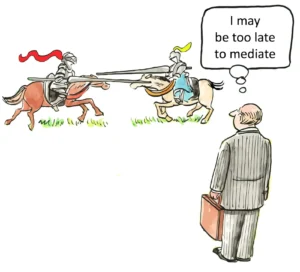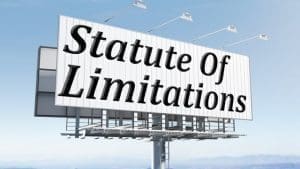How Do Trump’s Executive Orders Impact Federal Agencies?
President Donald Trump’s recent executive orders have ushered in significant changes to the federal workforce and agency operations. These orders, aimed at reshaping the government bureaucracy, have far-reaching implications for federal employees, agency policies, and the overall functioning of the U.S. government.
The cornerstone of Trump’s recent actions is the executive order implementing the “Department of Government Efficiency (DOGE) Workforce Optimization Initiative.” This order, signed on February 11, 2025, outlines a comprehensive plan to reduce the size of the federal workforce and streamline agency operations. The initiative places billionaire Elon Musk’s DOGE at the center of efforts to dramatically scale back government capacity.
One of the most impactful provisions of the order is the requirement that agencies hire only one new employee for every four who depart from federal service. This 4-to-1 attrition policy is expected to lead to significant reductions in the federal workforce over time. The order exempts personnel and functions critical to national security, public safety, law enforcement, and immigration enforcement from this hiring restriction.
The executive order also directs agencies to undertake plans for large-scale reductions in force (RIFs) and determine which agency components or entire agencies may be eliminated or combined because their functions are not required by law. This directive has created uncertainty among federal employees and raised concerns about the potential impact on government services.
In addition to workforce reductions, the order tasks agencies with developing data-driven plans for hiring career employees in the highest-need areas. These plans must be created in consultation with internal DOGE team leads, who will play a significant role in personnel decisions. This shift in hiring authority represents a departure from traditional civil service practices and has raised questions about the potential politicization of the federal workforce.
The Trump administration has justified these actions by arguing that the federal government is “bloated” and filled with unnecessary positions. However, some experts contend that the federal workforce has not grown significantly since 1980 and that certain agencies were already grappling with staffing shortages before these orders were issued.
Another key aspect of Trump’s executive actions is the rescission of various policies implemented by the Biden administration. For example, Trump has rolled back policies that extended enrollment periods for Affordable Care Act plans and granted additional funding for third-party enrollment assistance. This change could potentially impact healthcare access for millions of Americans who gained coverage under the expanded ACA enrollment.
The executive orders also address issues beyond workforce reduction. Trump has directed federal departments and agencies to terminate remote work arrangements and require employees to return to work in-person at their respective duty stations on a full-time basis. This move reverses pandemic-era policies that allowed for increased telework flexibility.
In the realm of regulatory reform, Trump has issued an order titled “Unleashing Prosperity Through Deregulation.” This order requires agencies to identify at least ten existing regulations to be repealed for each new rule proposed or finalized[. This aggressive deregulatory approach aims to reduce the overall regulatory burden on businesses and individuals but has raised concerns about potential impacts on public health, safety, and environmental protections.
The executive orders have also targeted specific programs and initiatives within federal agencies. For instance, Trump has ordered the elimination of Diversity, Equity, and Inclusion (DEI) programs across the federal government. This move aligns with the administration’s broader efforts to roll back policies focused on promoting diversity and addressing systemic inequalities.
In the foreign policy arena, Trump has ordered a freeze on most U.S. foreign aid programs for 90 days, pending a review[. This action has created uncertainty for international aid organizations and raised questions about the future of American soft power and global influence.
The implementation of these executive orders has not been without challenges. Several lawsuits have been filed contesting various aspects of the orders, particularly those related to federal employee rights and the establishment of DOGE. The legal battles surrounding these executive actions are likely to continue, potentially affecting their ultimate impact on federal agencies.
One of the most controversial aspects of Trump’s executive orders is the reinstatement of a modified version of “Schedule F,” a classification created during his first term that would convert tens of thousands of career federal workers in “policy-related” jobs into at-will positions. This change would effectively strip these employees of their civil service protections, making them more vulnerable to political pressure and easier to dismiss.
The reintroduction of Schedule F, now referred to as “Schedule Policy/Career,” has raised significant concerns among government watchdogs and employee unions. Critics argue that this move could lead to a politicization of the civil service and undermine the principle of a merit-based federal workforce. Defenders of the policy contend that it will increase accountability and allow for more efficient removal of underperforming employees.
Another significant change brought about by the executive orders is the restructuring of Executive Resources Boards (ERBs) and Performance Review Boards within agencies. The new directives require agency heads to terminate existing ERBs and institute new ones with a majority of senior noncareer officials serving alongside career members. This shift in board composition could have far-reaching implications for the hiring and evaluation of senior executive service (SES) officials.
The executive orders have also impacted specific agencies in unique ways. For instance, the Food and Drug Administration (FDA) may face challenges in meeting its performance goals and timelines due to potential staff losses and restructuring. This could have ripple effects on industries that rely on FDA approvals and reviews, such as pharmaceutical and medical device companies.
In the realm of foreign policy, Trump’s orders have led to significant changes at the U.S. Agency for International Development (USAID). The agency has been placed under the control of the Department of State, potentially reducing its independence and altering its operational focus. Additionally, more than 50 senior career USAID employees were reportedly put on administrative leave, raising concerns about the loss of institutional knowledge and expertise.
The executive orders have also targeted specific individuals within the government. For example, Trump ordered the removal of the portrait of former Chairman of the Joint Chiefs of Staff, General Mark Milley, from the Pentagon, as well as the removal of security details for former national security advisor John Bolton and former secretary of state Mike Pompeo[10]. These actions, perceived as punitive measures against former officials who have criticized Trump, have raised questions about the use of executive power for personal vendettas.
The impact of these executive orders extends beyond the federal workforce to affect various policy areas. In the healthcare sector, for instance, Trump rescinded an executive order that had asked the Center for Medicare and Medicaid Innovation (CMMI) to consider new payment and healthcare models to limit drug spending. This change could have implications for ongoing efforts to control healthcare costs and improve access to affordable medications.
In the realm of immigration policy, Trump’s orders have called for increased enforcement and deportations of undocumented immigrants. This shift in priorities is likely to have significant impacts on immigration agencies such as U.S. Customs and Border Protection (CBP) and Immigration and Customs Enforcement (ICE), potentially requiring increased resources and personnel for enforcement activities.
The executive orders have also touched on issues of government transparency and accountability. Trump has ordered the firing of inspectors general across various agencies, raising concerns about the independence of these watchdog offices and their ability to conduct oversight of government operations.
One of the most immediate and visible impacts of the executive orders has been the offering of a “deferred resignation” plan to more than 2 million federal employees. This program, which grants pay through the end of September 2025 in exchange for agreeing to step down, has already been accepted by approximately 75,000 workers. The large-scale departure of experienced federal employees could lead to significant knowledge gaps and operational challenges across various agencies.
The executive orders have also had implications for federal employee unions and collective bargaining rights. Trump is expected to sign orders reducing unions’ role at agencies and limiting federal workers’ collective bargaining rights. These actions could significantly alter the balance of power between management and labor within federal agencies and potentially lead to increased labor disputes.
In the realm of regulatory policy, the “ten-for-one” deregulation order represents a significant escalation of Trump’s previous “two-for-one” regulatory policy from his first term. This aggressive approach to deregulation is likely to have far-reaching impacts across various sectors of the economy and could potentially lead to legal challenges from environmental, consumer protection, and public health advocates.
The executive orders have also addressed issues of government spending and budgeting. A memorandum from the Office of Management and Budget (OMB) briefly froze trillions of dollars of federal grants and loans while the administration evaluated programs. Although this freeze was temporarily blocked by a federal judge, it created significant confusion and disruption across various government programs and services.
The impact of these executive orders on specific agencies and programs is likely to vary widely. For example, the Department of Veterans Affairs may face challenges in maintaining service levels if it experiences significant staff reductions. Similarly, agencies with specialized technical expertise, such as the National Institutes of Health or the Environmental Protection Agency, could struggle to maintain their capabilities if they lose key personnel.
The executive orders have also raised questions about the future of various government initiatives and priorities. For instance, the elimination of DEI programs across federal agencies could have implications for efforts to address systemic inequalities and promote diversity in government hiring and contracting. Similarly, the rollback of certain environmental regulations could impact ongoing efforts to address climate change and protect natural resources.
In the realm of technology and innovation, the executive orders have implications for government modernization efforts. While the orders emphasize the need for increased efficiency, the potential loss of skilled personnel and budget constraints could hamper ongoing efforts to upgrade government IT systems and improve digital services.
The executive orders have also touched on issues of national security and defense policy. While military personnel are largely exempt from the hiring restrictions and workforce reductions, civilian employees at the Department of Defense and other national security agencies may be affected. This could potentially impact support functions, intelligence analysis, and other critical non-combat roles.
In the area of economic policy, the executive orders’ emphasis on deregulation and government downsizing aligns with Trump’s broader economic agenda of reducing government intervention in the private sector. However, the potential loss of regulatory oversight and enforcement capabilities could raise concerns about consumer protection, financial stability, and environmental safeguards.
The executive orders have also raised questions about the long-term stability and continuity of government operations. The potential for large-scale staff reductions and agency reorganizations could lead to disruptions in service delivery and policy implementation. This volatility could make it challenging for businesses, state and local governments, and other stakeholders to plan and coordinate with federal agencies.
The impact of these executive orders on federal scientific research and data collection efforts is another area of concern. Agencies such as the National Oceanic and Atmospheric Administration (NOAA), the U.S. Geological Survey (USGS), and NASA play crucial roles in monitoring and studying various environmental and scientific phenomena. Potential staff reductions or reorganizations at these agencies could impact their ability to maintain long-term data sets and conduct critical research.
In the realm of public health, the executive orders could have significant implications for agencies such as the Centers for Disease Control and Prevention (CDC) and the National Institutes of Health (NIH). These agencies play crucial roles in disease surveillance, medical research, and public health policy. Any reductions in staff or resources could potentially impact their ability to respond to future health crises or advance medical research.
The executive orders’ impact on federal law enforcement agencies is another area of consideration. While agencies directly involved in immigration enforcement and national security are largely exempt from the hiring restrictions, other law enforcement bodies such as the FBI or DEA may face challenges in maintaining staffing levels and operational capabilities.
In the area of education policy, the executive orders could affect the Department of Education’s ability to implement and oversee various federal education programs. This could have implications for issues such as student loan administration, civil rights enforcement in schools, and the distribution of federal education funding.
The executive orders also raise questions about the future of various federal advisory committees and expert panels. These bodies, which provide valuable input on a wide range of policy issues, could be impacted by the broader push to reduce the size of the federal workforce and eliminate perceived redundancies.
In the realm of energy policy, the executive orders’ emphasis on deregulation could have significant implications for agencies such as the Department of Energy and the Federal Energy Regulatory Commission. This could potentially impact efforts to regulate energy markets, promote renewable energy development, and address issues of energy security.
The executive orders’ impact on federal disaster response capabilities is another area of concern. Agencies such as the Federal Emergency Management Agency (FEMA) rely on a combination of permanent staff and surge capacity to respond to natural disasters and other emergencies. Any reductions in permanent staff or changes to hiring practices could potentially impact the government’s ability to respond effectively to future crises.
In the area of transportation policy, the executive orders could affect agencies such as the Federal Aviation Administration (FAA) and the National Highway Traffic Safety Administration (NHTSA). These agencies play crucial roles in ensuring transportation safety and regulating emerging technologies such as autonomous vehicles. Any reductions in staff or changes to regulatory approaches could have implications for transportation safety and innovation.
The executive orders also raise questions about the future of various federal grant programs that support state and local governments, non-profit organizations, and academic institutions. Changes to agency staffing and priorities could potentially impact the administration and oversight of these grant programs, affecting a wide range of initiatives in areas such as community development, scientific research, and social services.
In conclusion, President Trump’s executive orders represent a significant shift in federal workforce and agency management policies. The full impact of these orders will likely unfold over time as agencies work to implement the new directives and navigate potential legal challenges. The changes brought about by these executive orders have the potential to reshape the federal government in profound ways, affecting everything from day-to-day agency operations to broader policy implementation and service delivery. As the situation continues to evolve, close monitoring and analysis will be crucial to understanding the long-term implications of these executive actions on federal agencies and the American public they serve.
Sources:
- https://www.whitehouse.gov/fact-sheets/2025/02/fact-sheet-president-donald-j-trump-works-to-remake-americas-federal-workforce/
- https://www.nbcwashington.com/news/local/trump-prepares-executive-order-to-keep-slashing-federal-workforce/3841947/
- https://www.govexec.com/workforce/2025/02/trump-orders-agencies-plan-widespread-layoffs-and-attrition-based-hiring/402938/
- https://www.maynardnexsen.com/publication-president-trumps-latest-executive-orders-impacting-health-care
- https://fedscoop.com/trump-order-agency-hiring-doge-leads-personnel/
- https://www.gibsondunn.com/impact-of-president-trump-executive-orders-on-the-federal-workforce/
- https://www.cbsnews.com/news/trump-federal-workforce-job-cuts-executive-order-doge-elon-musk/
- https://www.jdsupra.com/legalnews/president-trump-issues-executive-order-8452552/
- https://arabcenterdc.org/resource/trumps-executive-orders-and-actions-upend-policies-at-home-and-abroad/
- https://www.govexec.com/workforce/2025/01/trump-agencies-should-fire-all-bureaucrats/402353/
- https://www.hoganlovells.com/en/publications/trump-administration-issues-two-executive-orders-affecting-agency-regulations-and-workforce-
- https://www.jacksonlewis.com/insights/impact-president-trumps-eos-dei-essential-strategies-employers


















